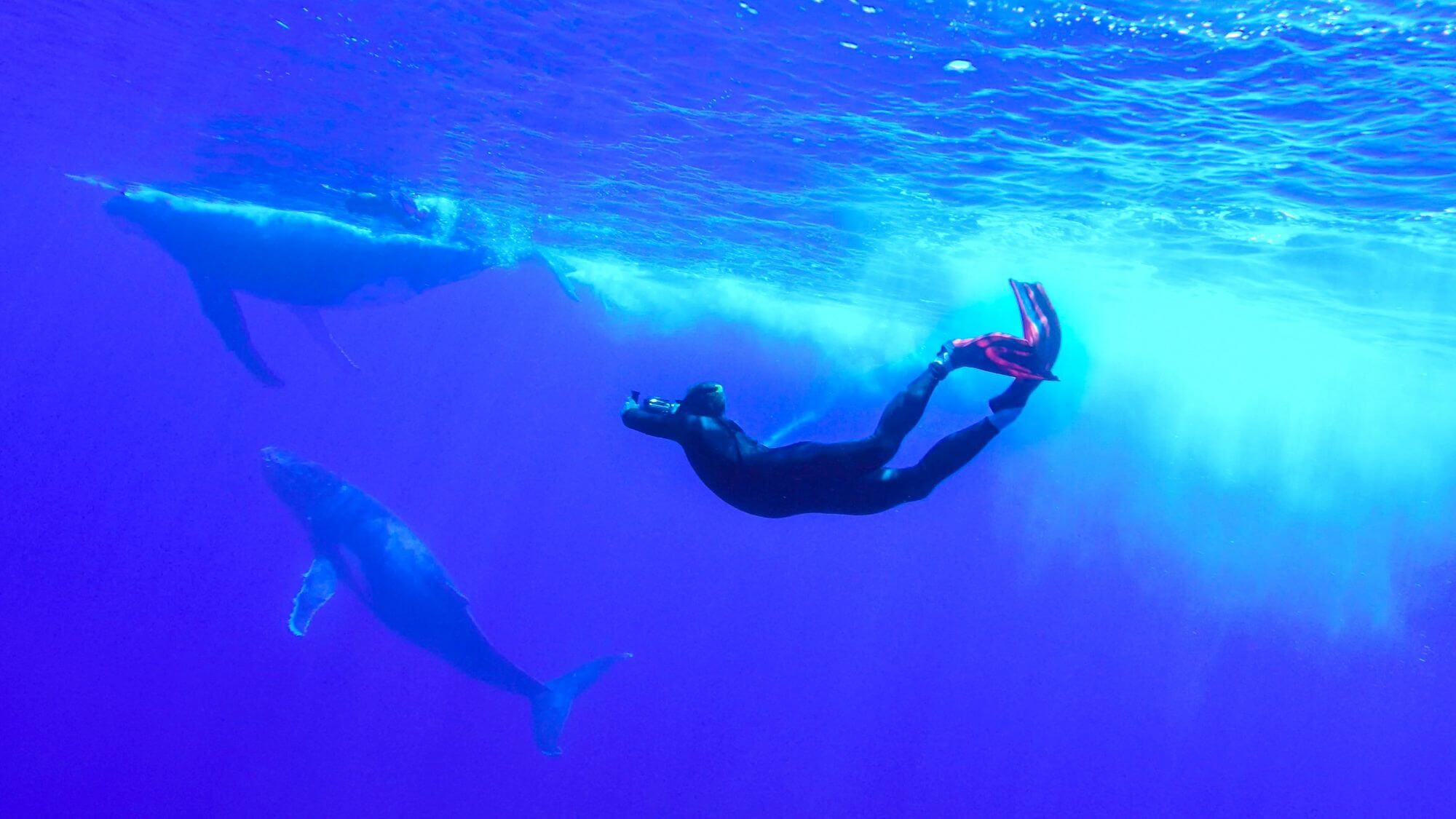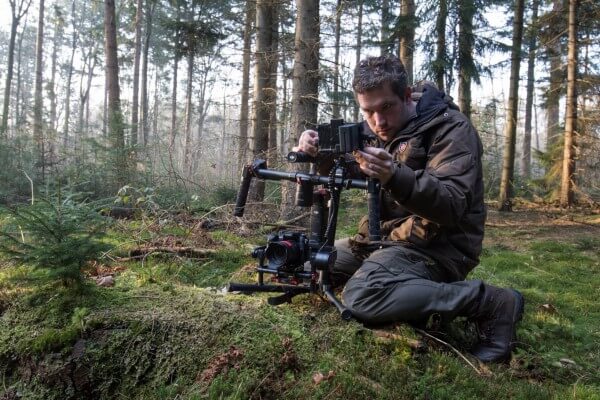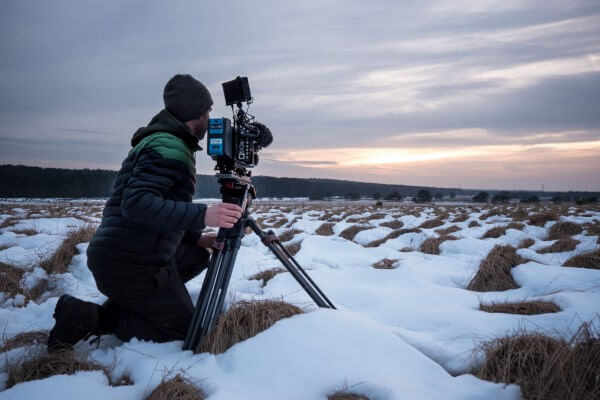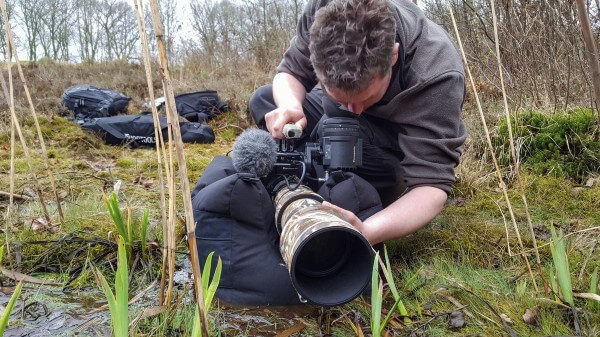A tale of sharks, whales, and beavers
DP Dick Harrewijn: “Surprising people is sheer magic.”

DP Dick Harrewijn: “Surprising people is sheer magic.”

A few weeks back, a jaw-dropping video was posted online by marine biologist Nan Hauser. Two humpbacks can be seen, protecting her against the attack of an oversized tiger shark. Filmed near the Cooke Islands, in the Pacific Ocean, the humpbacks try to shield Hauser with their fins, in a to humans not too gentle way. The researcher needs to push back, and at some moment even finds herself sitting on top of one humpback’s fin.
DP Dick Harrewijn: “It was just the second day in the water. The day before I had filmed a humpback, for the first time in my life, and thought to myself how enormous these animals were. It turned out the be just a calf; I hadn’t seen the mother at that time — coming in at over 30 tonnes.”
During the confrontation, Dick was so busy trying to stay alive that filming was halted. “On video, it looks very gracious, but it’s more like being beaten with surfing boards. I was all bruised up.”
Dick got out of the water to film Nan climbing back on the boat and only then heard about the shark. “I never noticed that shark. In hindsight, it explained the humpback’s seemingly strange behavior. It’s was staring at me from point blank — we sure ended up with some iconic footage.”


As a kid, Dick watched the underwater adventures of Jacques Cousteau and thought “that’s what I want to do.” Nine years past graduating from film school, Dick is creating nature films that move people, worldwide. Being a nature filmer with three feature-length movies under his belt, Dick travels all over the world. But his roots lie in the Netherlands. Living on the outskirts of the floodplains of the Rhine, he’s shooting a lot of footage locally. “You won’t spot any whales or sharks, but with a bit of luck you can spot a beaver family near their lodges.”
Office Drones
“There’s a story in everything,” Dick continues, wanting to connect people with nature, “whether it’s a whale or a woodlouse. We are too deprived of nature. In the weekends, office drones trash through woods with mountain bikes, scaring deer. Especially in rutting season, deer are easily scared and stay away for days before returning. But environmentalists that wander deep into a forest to photograph a rare butterfly don’t realize how equally damaging that can be.”



With that mindset, Dick knows how it’s like to embed himself in nature. For the film Wild, which premiered this week, and is about the Dutch reserve De Veluwe, he spent nights between grunting deer and rooting wild boars. Together with filmmaker Luc Enting, he spent hundreds of hours in the forest. “The feeling you get when seeing the cut after nine months of editing is amazing”.
Especially the opening scene brings back memories: “A ranger spotted a fox hunting mice, in the snow. That’s a very rare thing to have on camera.” Unfortunately, the fox never showed up again when Dick bivouacked in his observation tent for over two days. “I hate it when it’s cold,” Dick says “so I went home, but then I caught a real cold.” The ranger called in to report another sighting, and with a 40-degree fever, Dick reluctantly returned to his tent. Then, on the fourth day, the fox finally showed itself.
Freedom
“You never know what’s going to happen, or when. Besides having extreme patience, you just need to persevere. As a nature filmer, you’re both the DP and director, but there’s no script. That sometimes means you end up empty-handed.”
Dick’s next project has the longest production run so far — one and a half years on the Wadden Sea, the unique tidal region on the Northwest coast of The Netherlands, Germany, and Denmark. The movie Silence Of The Tides won’t be just about nature on the 30+ islands, but more focused on how men and nature live and use the Wadden together. “It’s the ultimate freedom, being able to amaze and surprise people, through my camera. It’s the best job in the world.”
This article was first published in its original form in the Algemeen Dagblad on Feb 6th, 2018, and written by David van der Heden. With permission from the author, it has been translated and adapted by Paul Matthijs Lombert.
